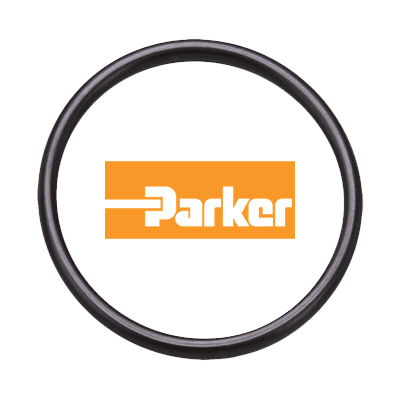Application for Open Credit terms is now available when shopping on our eCommerce platform! If interested, please download, fill out, and resubmit the application form in the "Open Terms Information" tab within "My Account". You will be notified when approval and credit limit is confirmed with our team.
High Performance FKM Seals from Parker
The world is experiencing an unprecedented confluence of supply disruptions, and low-temperature fluorocarbon rubber polymers may be the most directly impacted. Some polymer companies have announced the discontinuation of some grades, while others are severely limited in the quantity they can produce. As a result, many seal manufacturers have announced that they need to meet customer demand for these high-performance materials.
Fortunately, Parker has the material to fill these gaps.
Fluorocarbon rubber is truly the workhorse of the seal industry, but historically, it has had one Achilles heel: low-temperature performance. Standard fluorocarbon polymers lose resiliency and can start leaking around -15°F / -26°C. (It's important to note that in most real-world oil and grease applications, fluorocarbon compounds routinely maintain a leak-free seal down to -40°F / -40°C thanks to the viscosity increase of these fluids at temperatures that low.)

When better low-temperature performance is needed, a GLT-type fluorocarbon polymer can push that functional low-temperature performance down to -40°F / -40°C. Parker has two primary go-to compounds in this performance range: VG323-75 and VM125-75. VG323-75 was developed for high-temperature oil and hot water/glycol coolant applications, typically seen in the engines and turbochargers of passenger cars, heavy trucks, and construction and agriculture equipment. VM125-75 was developed for aerospace fuel and turbine oil applications and is certified to both AMS-R-83485 and AMS 7287.
However, there are still many low-temperature applications where this GLT-type material technology needs to be better. With an extra 5 to 10°F (2.8 to 5.6°C) of improved low-temperature performance, but without a catchy letter designation or acronym, are VG286-80 and VG109-90. In addition to this improved low-temperature performance, these materials also come with improved resistance to methanol and other low molecular-weight alcohols. VG286-80 has seen success in high-pressure gasoline direct-injection fuel injectors. In contrast, VG109-90 has been most successful in the oilfield industry with aggressive drilling fluids and high-pressure CNG and LNG applications.
When an application needs to go even colder, VG130-75 offers outstanding low-temperature performance, with TR-10 and glass transition temperature (midpoint) results below -40°F / -40°C. That's 18°F (10°C) better than even the GLT-type polymers. This results in functional low-temperature sealing effectiveness down to -55°F (-48°C) in static seal applications typical for O-rings, press-in-place seals, lathe-cut seals, and over-molded gaskets. In addition to the "normal" spectrum of fluorocarbon chemical resistance, VG130-75 has improved resistance to low molecular weight alcohols such as methanol and ethanol, hot water-glycol coolants, automotive transmission fluids, and HTS turbine oils.
When temperatures sink to the very bottom, Parker compounds VX065-75 and VX365-75 rise to the top. (To be clear, the X is for extreme, not experimental.) With a functional low-temperature range down to -65°F (-54°C), these extreme compounds can cover the toughest low-temperature applications for which fluorosilicone and aerospace-grade nitrile rubber compounds are needed. Compared to these other materials, VX065-75 and VX365-75 have dramatically better chemical resistance, compression set resistance, and high-temperature performance. As a result, most of the success of these materials has been in critical aerospace applications and, in the case of VX365-90, in extremely high-pressure gas applications. Because extremely high fluid pressure can change the low-temperature performance of rubber, an application that requires sealing of 10,000 psi (695 bar) gas pressure at -40°F / -40°C needs an extremely low-temperature compound like VX365-90 to maintain a leak-free performance.
These low-temperature compounds maintain excellent permeation, compression set resistance, high-temperature stability, and compatibility with oils, grease, solvents, and other harsh chemistries for which fluorocarbon rubber is well known.
To borrow a saying from the world of sports, the best ability is availability. And that can be hard to come by these days.
Feel free to check out our YouTube video about considerations when choosing a fluoroelastomer:
Article re-posted with permission from Parker Hannifin Sealing & Shielding Team.
Original content can be found on Parker’s Blog.
Gallagher Fluid Seals is a Seal Technology Center for Parker. The STC is reserved for Parker’s premier level distributor network, for those distributors who drive value-added services to the mutual customer base.
